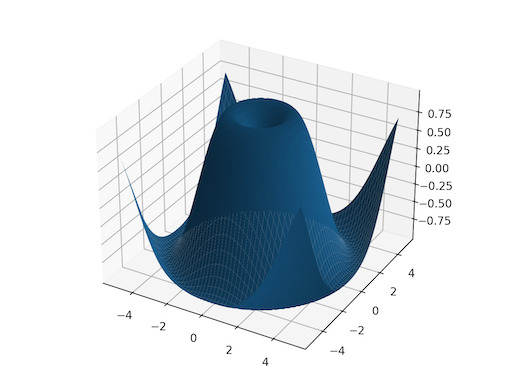本文简要介绍python语言中 torch.meshgrid 的用法。
用法:
torch.meshgrid(*tensors, indexing=None)tensors(张量列表) -标量或一维张量列表。标量将自动被视为大小为 的张量
indexing-
(str,可选):索引模式,“xy” 或“ij”,默认为“ij”。请参阅警告以了解未来的变化。
如果选择“xy”,则第一个维度对应于第二个输入的基数,第二个维度对应于第一个输入的基数。
如果选择“ij”,则维度的顺序与输入的基数相同。
如果输入具有大小为 的 张量,则输出也将具有 张量,其中每个张量的形状为 。
seq(张量序列)
创建由
attr:tensors 中的一维输入指定的坐标网格。当您想要在某个输入范围内可视化数据时,这很有帮助。请参阅下面的绘图示例。
给定 1D 张量 作为具有相应大小的输入 ,这将创建 N 维张量 ,每个具有形状 ,其中输出 是通过扩展 构造的到结果形状。
注意
0D 输入等同于单个元素的 1D 输入。
警告
torch.meshgrid(*tensors)当前与调用numpy.meshgrid(*arrays, indexing=’ij’)具有相同的行为。将来
torch.meshgrid将转换为indexing=’xy’作为默认值。https://github.com/pytorch/pytorch/issues/50276 tracks this issue with the goal of migrating to NumPy’s behavior.
例子:
>>> x = torch.tensor([1, 2, 3]) >>> y = torch.tensor([4, 5, 6]) Observe the element-wise pairings across the grid, (1, 4), (1, 5), ..., (3, 6). This is the same thing as the cartesian product. >>> grid_x, grid_y = torch.meshgrid(x, y, indexing='ij') >>> grid_x tensor([[1, 1, 1], [2, 2, 2], [3, 3, 3]]) >>> grid_y tensor([[4, 5, 6], [4, 5, 6], [4, 5, 6]]) This correspondence can be seen when these grids are stacked properly. >>> torch.equal(torch.cat(tuple(torch.dstack([grid_x, grid_y]))), ... torch.cartesian_prod(x, y)) True `torch.meshgrid` is commonly used to produce a grid for plotting. >>> import matplotlib.pyplot as plt >>> xs = torch.linspace(-5, 5, steps=100) >>> ys = torch.linspace(-5, 5, steps=100) >>> x, y = torch.meshgrid(xs, ys, indexing='xy') >>> z = torch.sin(torch.sqrt(x * x + y * y)) >>> ax = plt.axes(projection='3d') >>> ax.plot_surface(x.numpy(), y.numpy(), z.numpy()) <mpl_toolkits.mplot3d.art3d.Poly3DCollection object at 0x7f8f30d40100> >>> plt.show()
参数:
返回:
返回类型:
相关用法
- Python PyTorch mean用法及代码示例
- Python PyTorch median用法及代码示例
- Python PyTorch monitored_barrier用法及代码示例
- Python PyTorch multinomial用法及代码示例
- Python PyTorch matrix_rank用法及代码示例
- Python PyTorch mm用法及代码示例
- Python PyTorch mv用法及代码示例
- Python PyTorch min用法及代码示例
- Python PyTorch max用法及代码示例
- Python PyTorch msort用法及代码示例
- Python PyTorch mode用法及代码示例
- Python PyTorch movedim用法及代码示例
- Python PyTorch matrix_exp用法及代码示例
- Python PyTorch matmul用法及代码示例
- Python PyTorch matrix_power用法及代码示例
- Python PyTorch maximum用法及代码示例
- Python PyTorch masked_select用法及代码示例
- Python PyTorch maskrcnn_resnet50_fpn用法及代码示例
- Python PyTorch minimum用法及代码示例
- Python PyTorch multi_dot用法及代码示例
- Python PyTorch mul用法及代码示例
- Python PyTorch movielens_25m用法及代码示例
- Python PyTorch matrix_norm用法及代码示例
- Python PyTorch multigammaln用法及代码示例
- Python PyTorch movielens_20m用法及代码示例
注:本文由纯净天空筛选整理自pytorch.org大神的英文原创作品 torch.meshgrid。非经特殊声明,原始代码版权归原作者所有,本译文未经允许或授权,请勿转载或复制。
